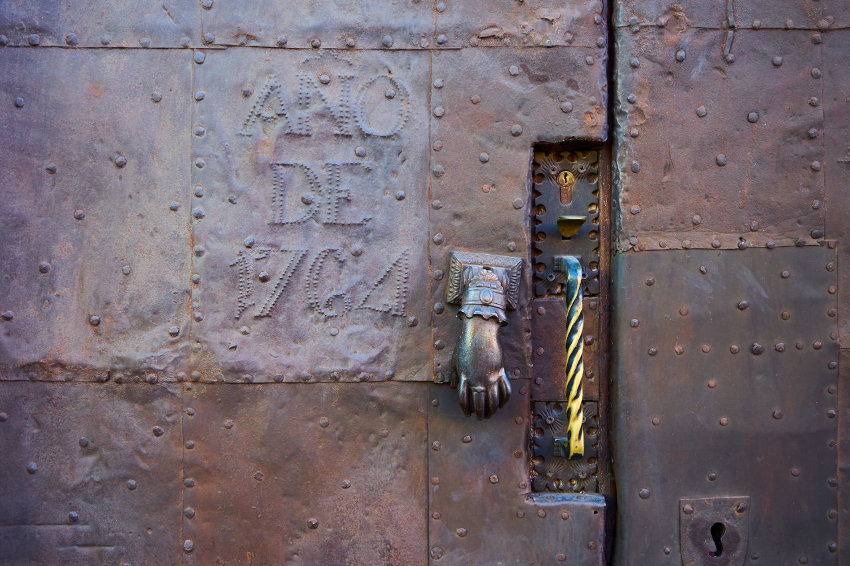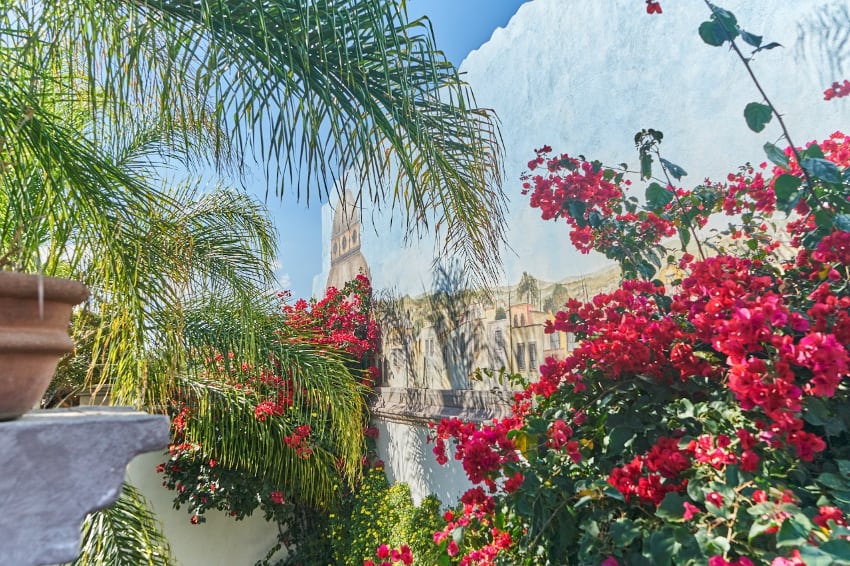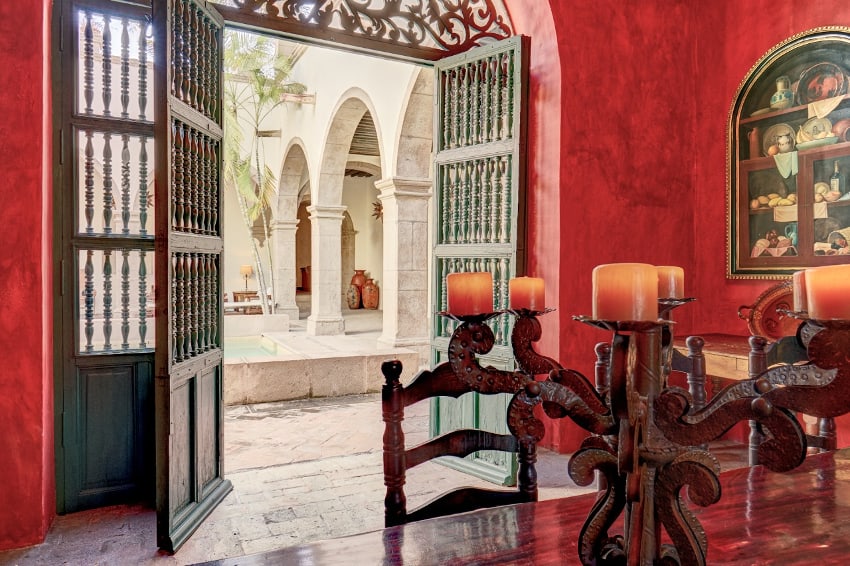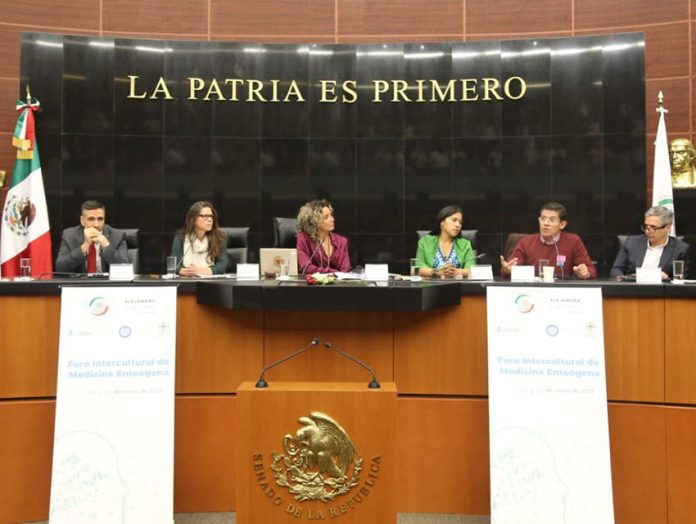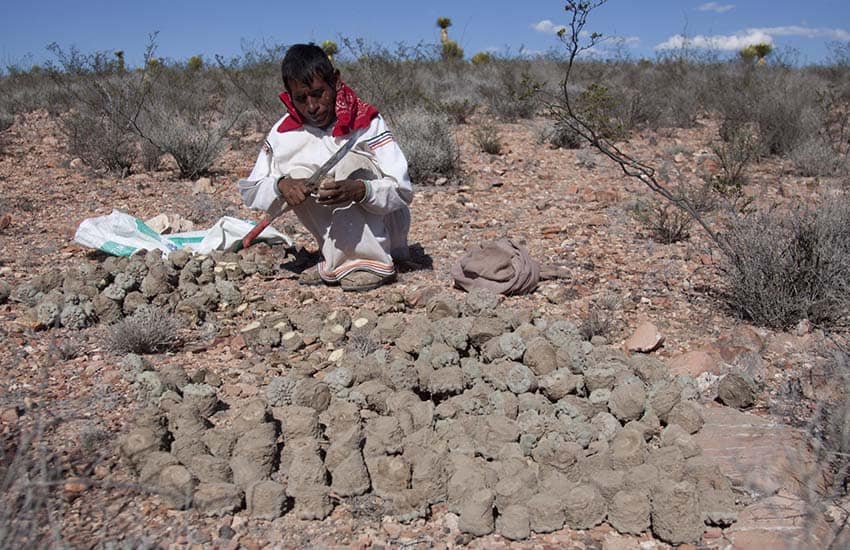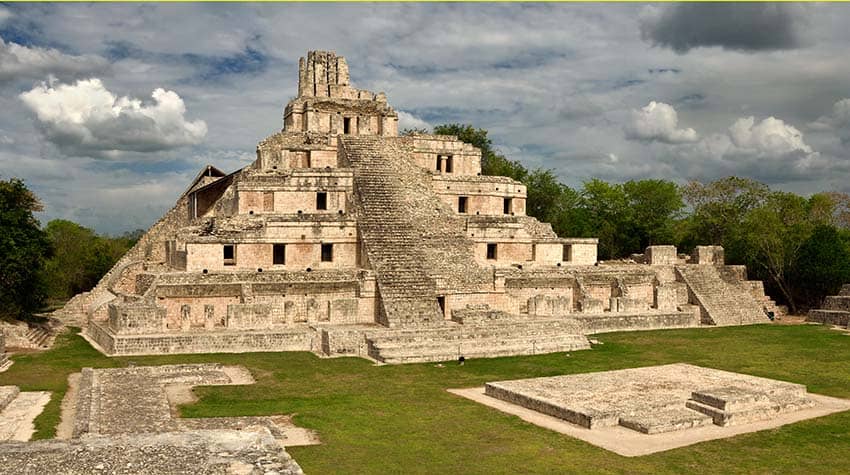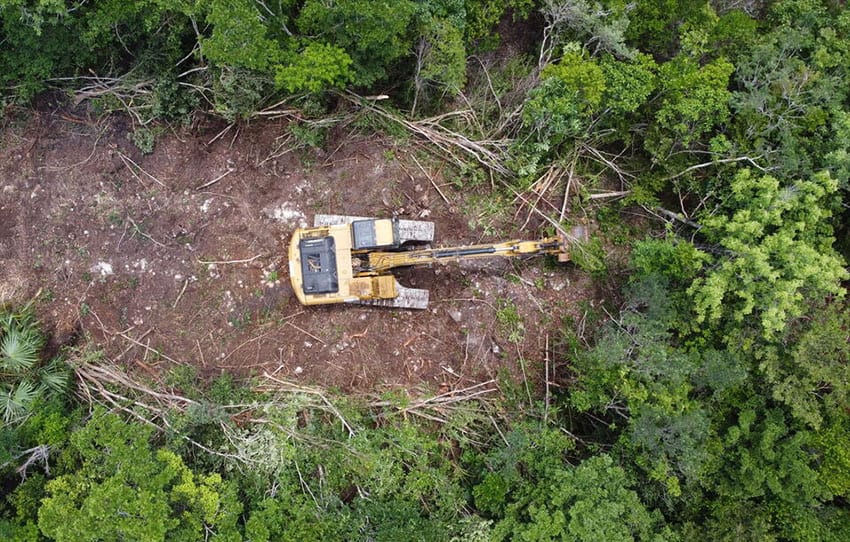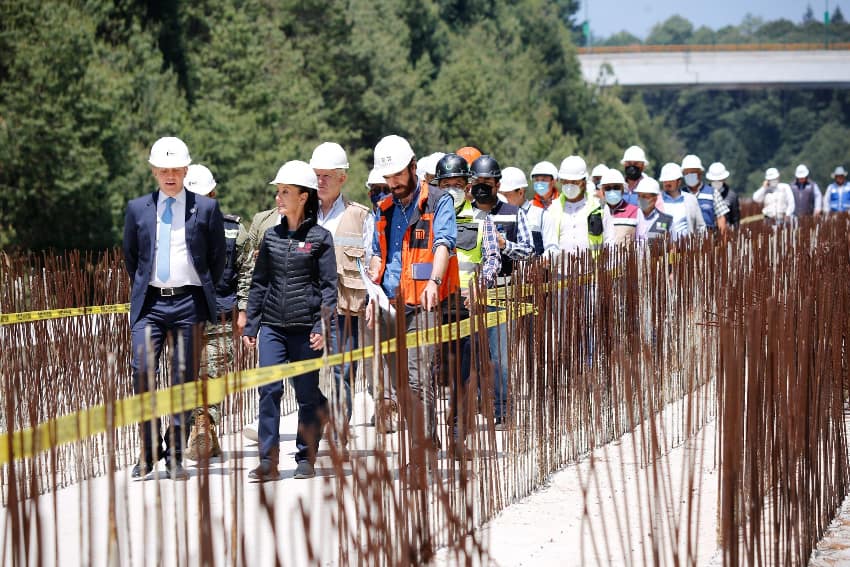Before I married a Mexican, my typical breakfast consisted of a cup of coffee and a bowl of cereal. The closest I came to fruit for breakfast was half a banana unceremoniously dumped into the bowl — unless you count the raisins in my Raisin Bran, but they were hard and shriveled, no more attractive than those rabbit droppings euphemistically referred to as “lawn chocolates.”
This, I eventually discovered, is no way to start the day from a Mexican woman’s point of view!
Every morning, my wife Susy places before me la pièce de résistance of a good and proper Mexican breakfast: el plato de frutas (the fruit platter). The sine qua non of the Mexican fruit platter, I quickly learned, is papaya, which, after all, is believed to have originated in Mexico.

Ever since I discovered that eating papaya regularly prevents kidney stones, (another story for another time) I agree that no fruit platter should ever be without it. In addition to papaya, you will typically find cantaloupe, mango, watermelon and, of course, my old friend the banana.
After that, there’s no limit, and, depending on your location and the time of year, you may have a chance to taste more exotic fruits like mamey, chirimoya (custard apple), capulín (capulin cherry), guava and pitahaya (dragon fruit).
To my surprise, I found that no restaurant or hotel in Mexico would ever deny a fruit platter to their morning guests, even if it’s not mentioned on the menu. This suits my wife just fine as she considers the fruit platter the only proper way to start one’s day, not only for human beings but for just about every other creature on the planet.
Every other creature? Well, I thought that was going a bit too far, but I learned. At some point, Susy began putting a plate of fruit in the front yard for “those other creatures.”
I scratched my head. “Who is that supposed to be for?”
“You never know,” she replied. “It’s fruit — who could resist it?”
To my surprise, I found the plate empty the next morning.
The following day, it happened again; someone was eating the fruit in the dark!

I convinced Susy to move that plate to a strategic spot where we could see it through a window, and we began a nightly vigil.
A few days passed, and finally Susy glanced through the window at just the right moment. “It’s a fox,” she whispered to me. Then: “No, it’s two foxes… wait…. it’s THREE foxes!”
Watching these three gray foxes devour fruit became our nightly pastime, and we now consider ourselves somewhat knowledgeable about foxes’ favorite treats.
Want to utterly win the heart of a fox? Just put out the ripest, gooiest, stickiest mango you can find. I guarantee nothing will be left of it but the cleanest pit stone you’ve ever seen.
We learned that foxes also love raw eggs and very much enjoy peanuts, which they somehow manage to shell before eating.
One day, Susy gave me a new surprise.
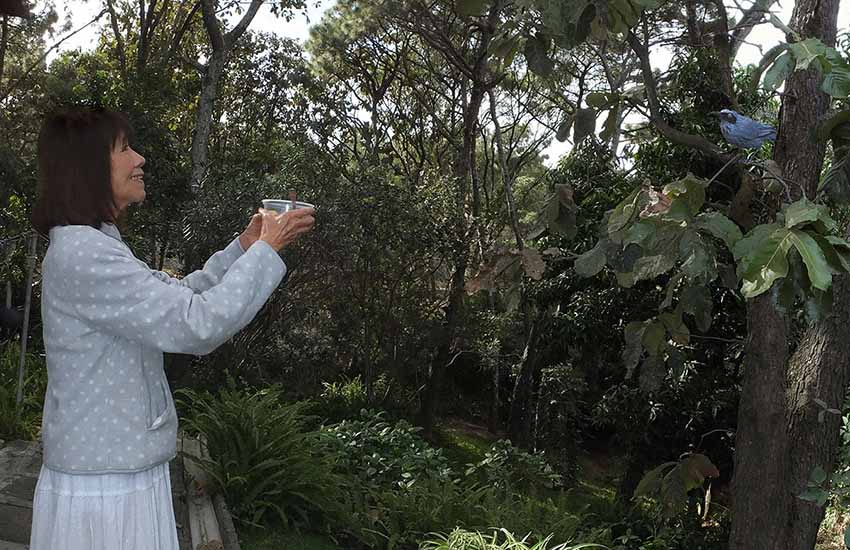
“I found another creature that likes fruit: it’s a mulato.”
I understood that the mulato was a bird, but which bird, I couldn’t guess — until one day, Susy called me.
Through our screen door, I could see the creature in question happily picking at chopped-up papaya and bananas.
“Oh,” I said. “Your mulato is a mockingbird: a blue mockingbird (Melanotis caerulescens) to be exact.”
This bird, it seems, is a native of Mexico, but occasionally shows up as a vagrant in the United States. It is considered one of the most beautiful birds in the world.
Its blue color comes from the way its feathers are structured, not pigmentation, so it might look blue, gray or even black depending on how the sun hits it.
Blue mockingbirds love to eat fallen fruit as well as the insects and spiders they might find among the berries. As for their ability to mock the songs of other birds, they might learn as many as 200 melodies over their lifetime.
This mockingbird soon became a regular guest outside our kitchen door, and Susy started calling him El Pediche (scrounger or beggar).

Now that we were providing regular meals to El Pediche, he took up residence in a tall cypress tree above our parking area, and almost every day, we could listen to his entire repertoire of “songs,” which consisted of imitations of other birds’ tunes but also a repertoire of squeaks, whistles, imitations of car alarms and cell phone sounds. He also could do a perfectly executed cat’s meow, which he could easily have picked up in our rural community, where almost every empty lot has a feral feline in residence.
It was a joy to approach El Pediche’s favorite tree and quietly listen. Sometimes he might go through a string of 15 “pieces” and then start over from the beginning, following the same order but occasionally adding a creative arpeggio here and there.
When Susy told her poetically inclined sister, Lulú, about El Pediche’s singing, she replied: “You can’t call him Pediche. Since he’s such a great singer, you must name him Pavarotti!” And the name stuck.
Since then, Pavarotti has shown up several times daily for handouts, frequently appearing with his mate (duly named Luciana) and eventually with three babies. All of them seemed to confirm Susy’s hypothesis that no creature can resist the charm of fresh fruit.
And, in fact, on those rare occasions when the fruit turned out to be substandard, these very sophisticated feathered gourmets would give my wife a baleful glance and fly away without touching it.
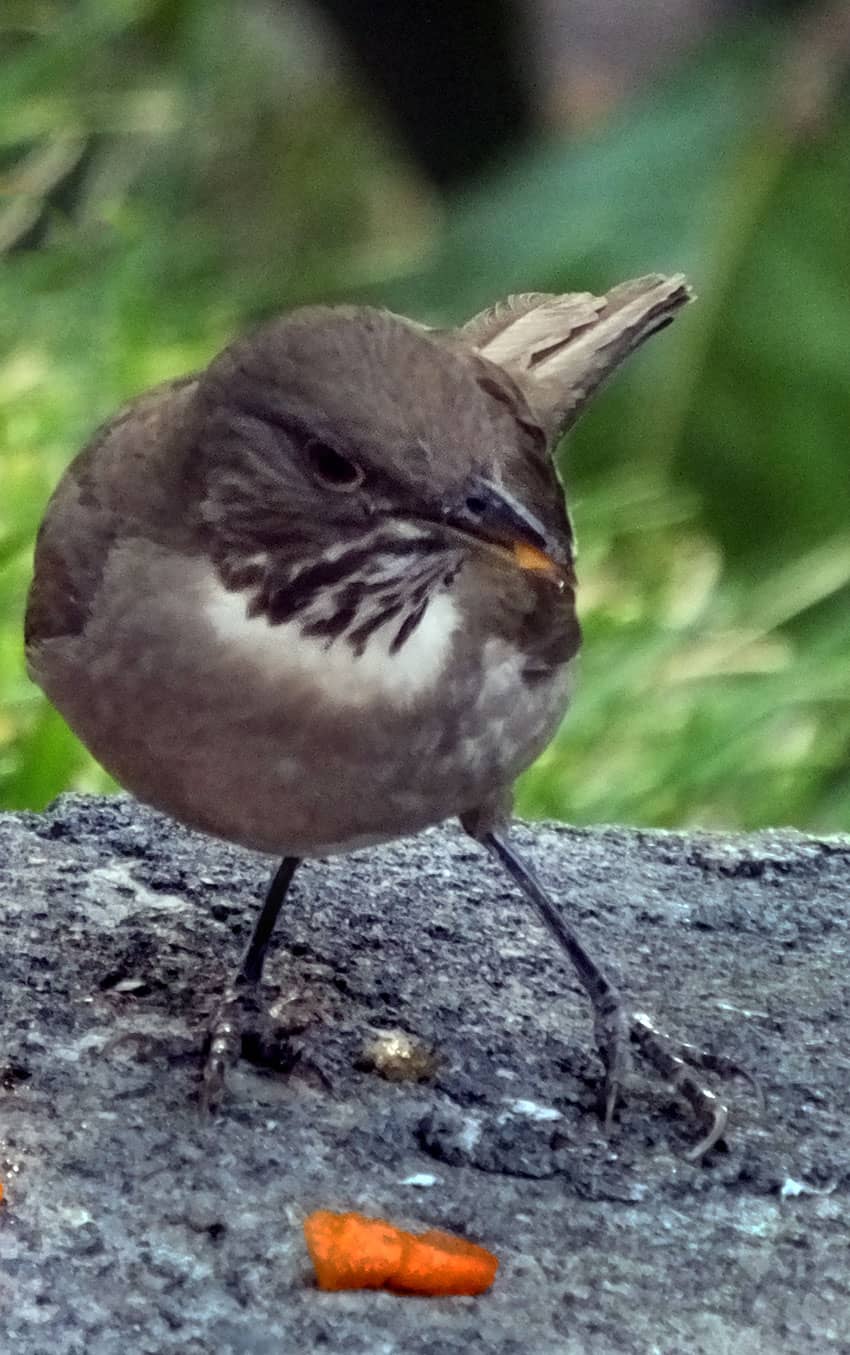
All this inspired Susy to begin a chronicle (in Spanish) entitled “Pavarotti y Yo” that I think proves that her sister Lulú is not the only poet in the family.
In this report, we meet several other birds who regularly accompany the mockingbirds to the dinner plate. These include fiesty “Momoto,” a russet-crowned motmot (Momotus mexicanus), and an omnivorous white-throated thrush (Turdus assimilis) that Susy calls “Zorzalino.”
Their antics and interactions continuously provide material for Susy’s never-ending Pavarotti chronicles, but there’s one thing they all have in common: they just can’t resist that Mexican fruit platter!
The writer has lived near Guadalajara, Jalisco, since 1985. His most recent book is Outdoors in Western Mexico, Volume Three. More of his writing can be found on his blog.


